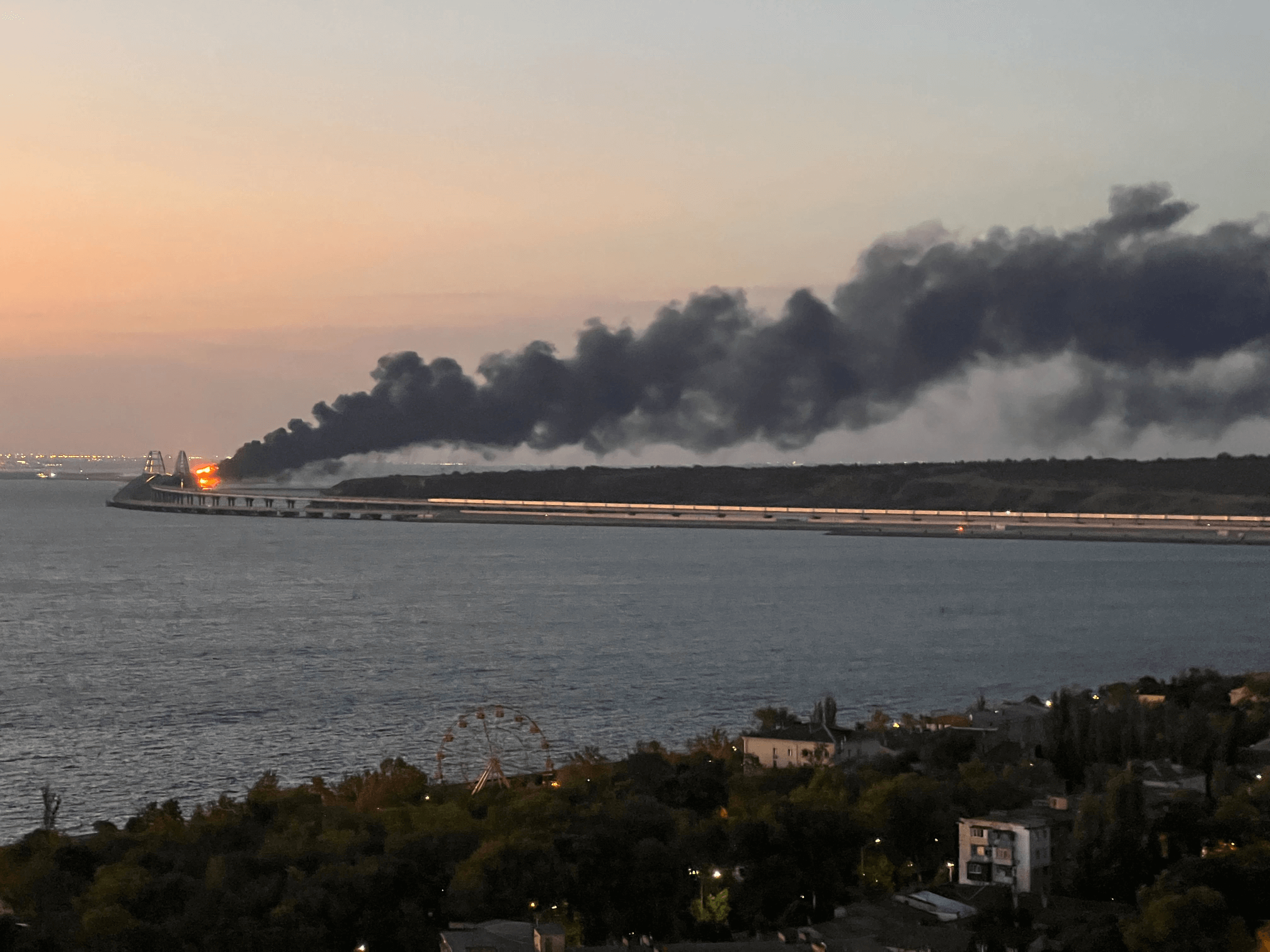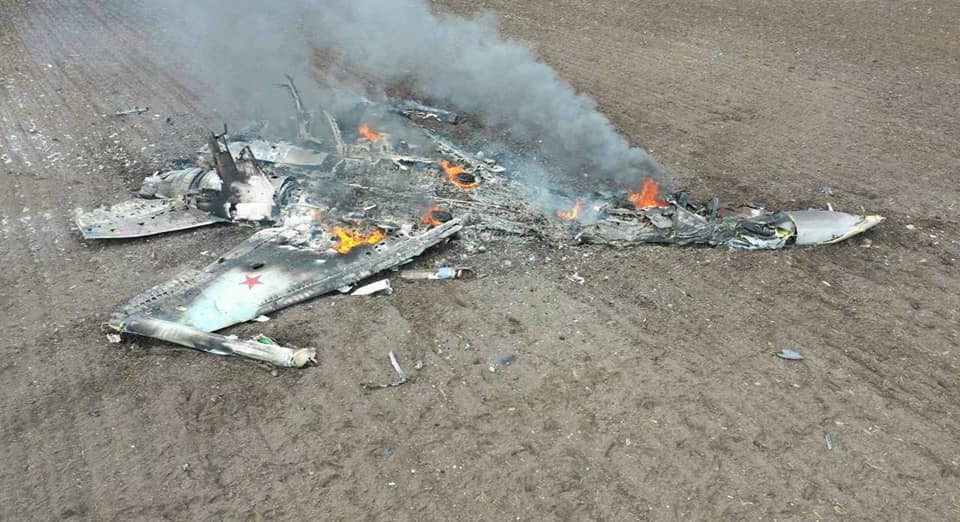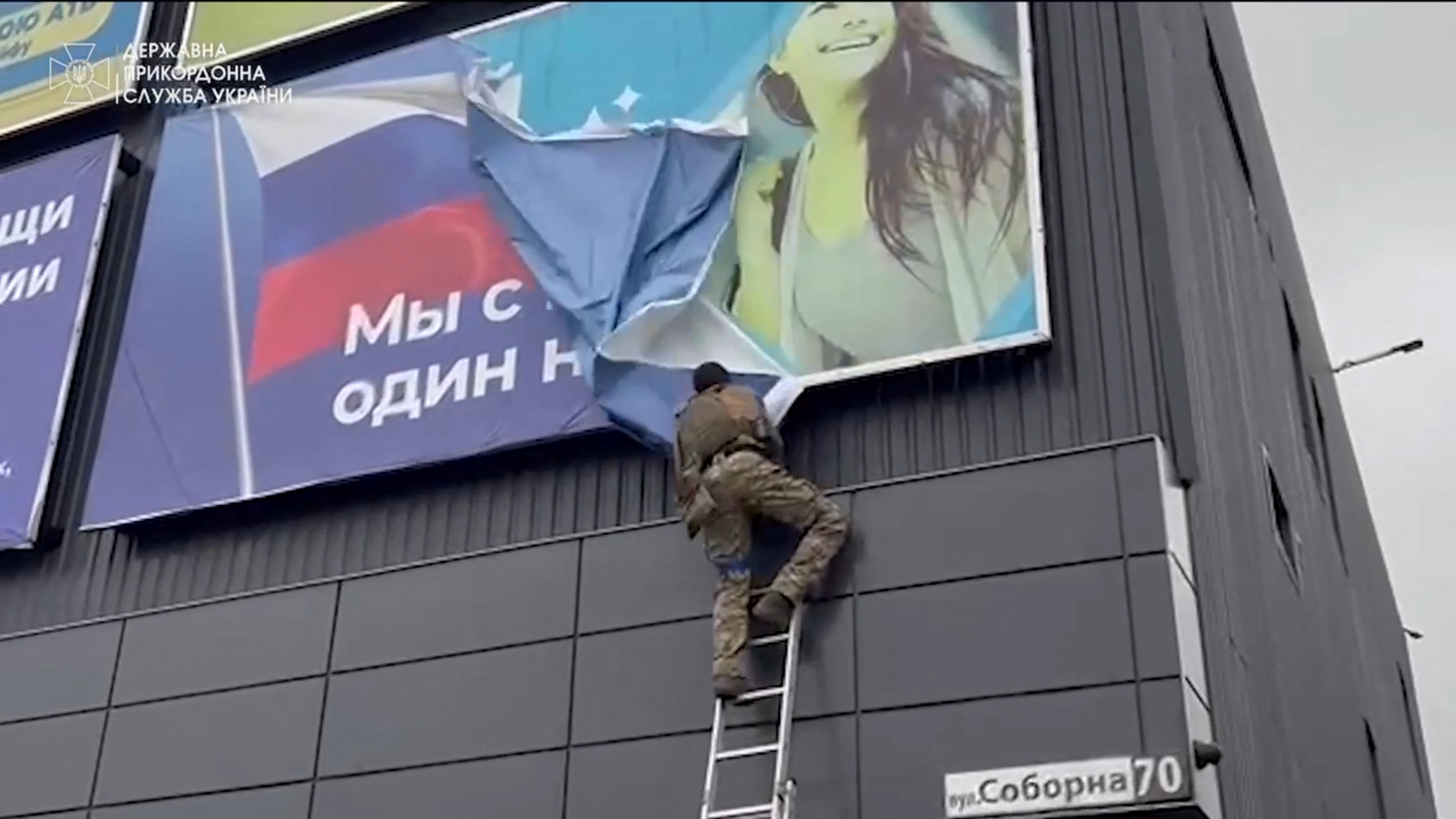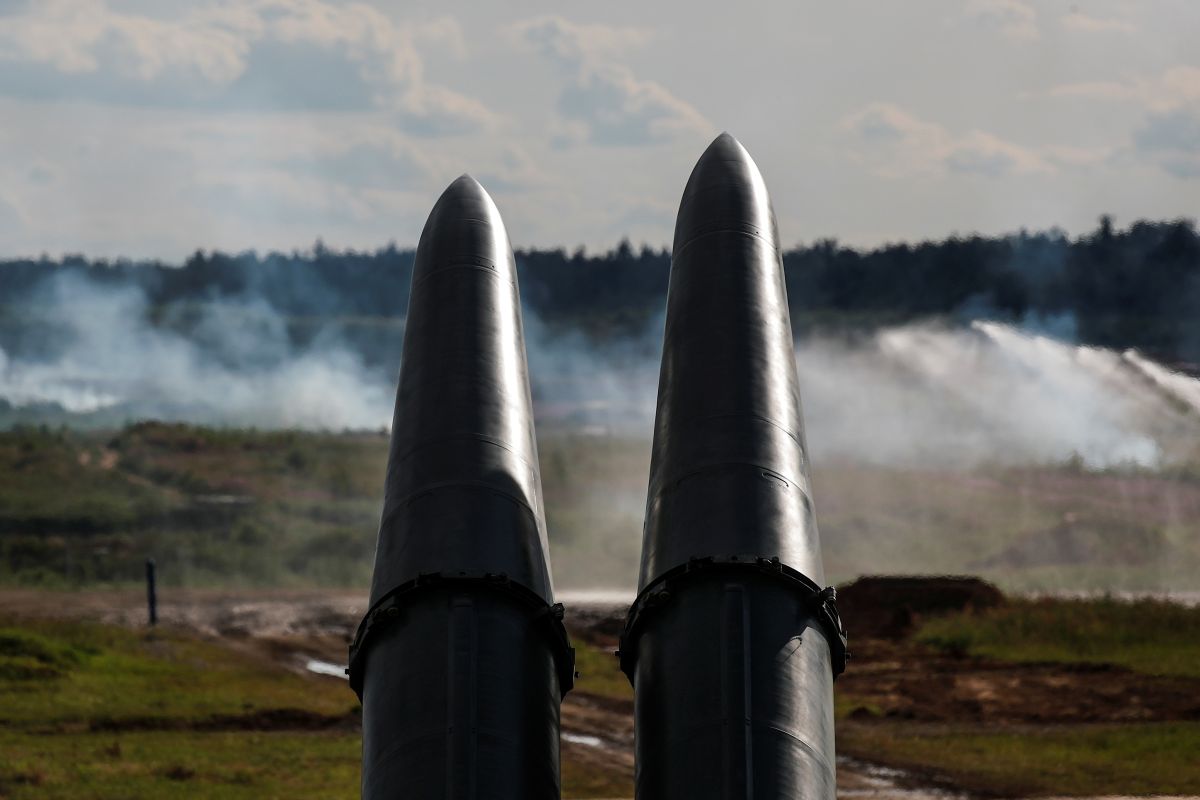Consequences of the Explosion on the Crimean Bridge
On 8 October, an explosion took place on the Crimean Bridge connecting the occupied Crimea with Russia. As a result, one side of the double road crossing and the railway were damaged. The bridge is key to the Russians’ supply of Crimea and the transfer of troops and weapons to the south of Ukraine. In response, Russia launched massive missile attacks against Ukraine, mainly against civilian targets and energy infrastructure. There is a growing need to support Ukraine with air defence systems.
 STRINGER/Reuters/Forum
STRINGER/Reuters/Forum
What are the direct effects of the explosion?
According to the official version, on 8 October in the morning, material transported by truck exploded on the road across the Crimean Bridge. So far, no one has admitted to the attack. As a result of the explosion, part of the road crossing leading from the occupied peninsula towards Russia collapsed. The impact of the explosion ignited fuel tankers on train cars that were nearby and damaged that section of the railway bridge. The Russians managed to partially restore vehicle traffic in shuttle mode, and according to official announcements, local passenger trains are using the railway bridge.
The damage to the bridge has great propaganda significance. It came the day after Vladimir Putin’s 70th birthday and was a blow to the image of the Russian security services, which claimed that the crossing was specially protected. The construction of the bridge was a flagship investment after the illegal occupation of Crimea in 2014 and was intended not only to symbolically confirm the peninsula’s connection with Russia but also to impede the movement of Ukrainian merchant ships and warships through the Kerch Strait.
What was the Russian reaction?
Putin called it a terrorist attack by Ukraine aimed at infrastructure essential for the functioning of the Russian state. In response, Russia launched massive missile attacks against Ukraine targeting civilian and energy infrastructure. Putin threatened that each subsequent Ukrainian attack on “Russian territory” would meet with an adequate response, which increases the likelihood of deliberate attacks on civilian objects.
Moreover, officially in response to the alleged growing threat to the Union State of Belarus and Russia from NATO countries, the two countries are forming a Regional Forces Group. This does not mean that the armed forces of Belarus will be engaged in direct operations in Ukraine at the present stage of the war, but it indicates that Belarus will continue to fully protect Russian troops and equipment stationed on its territory and make military infrastructure available for Russian forces.
What does the bridge explosion mean for the military situation in southern Ukraine?
According to estimates from the Ukrainian side, up to 75% of the military supplies for the southern theatre of operations went through the bridge and Crimea. The damage to this bridge means that Russia will have limited possibilities to rotate the forces currently fighting and occupying southern Ukraine (mainly in Kherson Oblast), to supplement them with newly mobilised personnel, and provide them with additional equipment. This increases Ukraine’s chances of success in further military operations in this part of the country. Over the past few weeks, Ukraine has launched a successful counter-offensive in the Kherson Oblast, along the western bank of the Dnieper River towards Kakhovka (where it has managed to move the front line about 30 km south) and towards Kherson. In early October, Ukraine also restored control over the city of Lyman in Donetsk Oblast. It also continues its attack east of the Oskol River towards Luhansk Oblast. According to the President of Ukraine Volodymyr Zelensky, in the course of recent counter-offensive actions, Ukraine managed to restore control over 2,434 km2 and 96 towns. The Ukrainian military successes have shattered Russia’s propaganda message that accompanied the holding of illegal referendums in Ukraine’s four oblasts and showed that Ukraine will continue to strive to regain further occupied territories.
What are the medium-term consequences of the bridge attack and the Russian escalation?
Blowing up part of the bridge may contribute to a further decline in Russians’ confidence in state structures, which had guaranteed the security of this crossing despite the ongoing conflict. From the Russian perspective, it will therefore be crucial to restore railway traffic as soon as possible, due to its importance for supplying Crimea with food, fuel, and other goods, and the strategic role in the transfer of forces and military equipment to the occupied territories of southern Ukraine (mainly to the Kherson Oblast).
The attack on the bridge has raised the morale of Ukrainians, for which it was another sign of Russia’s weakness and Ukraine’s ability to defeat the aggressor. The Russian missile attacks carried out in revenge will not significantly weaken Ukraine’s resolve to defend itself and conduct a counter-offensive, provided that Ukraine receives additional support from Western partners. Attacks on civilian targets have already triggered a strong reaction from the international community, and the U.S. and Germany have announced the transfer of more air defence systems to Ukraine.
Russia’s announcements of possible further retaliation measures (also taking into account the previous damage to the Nord Stream 1 and 2 gas pipelines) should also be a signal for NATO to update the lists of critical infrastructure facilities and to increase their protection, both physically and against cyberattacks.





